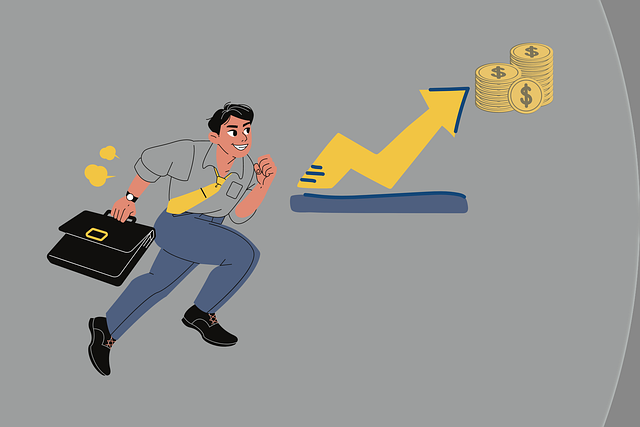1. What is CoolSculpting?
– CoolSculpting is a non-invasive fat reduction treatment that uses controlled cooling to eliminate fat cells without surgery or downtime. It's FDA-cleared for targeting and eliminating treated fat cells in nine different areas of the body.
2. How does CoolSculping work?
– The CoolSculpting procedure involves placing a device on your skin that cools (freezes) fat cells to temperatures that trigger apoptosis—programmed cell death—in a controlled and safe manner. Over time, the body naturally processes and eliminates these dead cells, resulting in a noticeable reduction in fat.
3. What are the benefits of CoolSculpting?
– CoolSculpting is non-surgical, has minimal recovery time, targets specific areas of fat, and provides sustainable results with a single treatment session per area. It's an alternative to liposuction and other invasive procedures.
4. How many sessions are needed?
– The number of sessions required varies by individual and the amount of fat to be treated. Typically, one session per area is performed, with subsequent sessions spaced several weeks apart for optimal results.
5. What are the post-treatment care instructions?
– After a CoolSculpting treatment, you may experience some temporary redness, numbness, bruising, or discomfort in the treated area, which usually resolves within a short period. There's no significant downtime, and you can return to your normal activities immediately after the session.
6. What are the expected results?
– Results can be seen as soon as three weeks after a treatment, with the most dramatic changes typically appearing over two to four months. As the body naturally eliminates the treated fat cells, the changes continue for up to six months.
7. How does CoolSculpting marketing effectively communicate its benefits?
– Effective marketing strategies for CoolSculpting include sharing before-and-after images and patient testimonials, providing educational content that explains the procedure, leveraging social media platforms, and employing SEO to improve online visibility. Engaging potential candidates through live Q&A sessions, webinars, and real-time consultations also plays a crucial role.
8. How does CoolSculpting marketing measure success?
– Success is measured through various KPIs such as audience engagement, web traffic, conversion rates, and most importantly, patient satisfaction as reported through feedback and follow-up consultations.
9. What are the key performance indicators (KPIs) for CoolSculpting marketing campaigns?
– KPIs include website traffic, session attendance rates, lead generation, appointment bookings, patient satisfaction scores, social media engagement metrics, and return on investment (ROI).
10. Why is it important to avoid overused marketing terms and phrases in CoolSculpting marketing?
– To maintain credibility, stand out from competitors, and accurately convey the benefits of the treatment without overselling or misleading potential patients. This approach fosters trust and a genuine understanding of what CoolSculpting can achieve.
Exploring the intricacies of CoolSculpting marketing and its role in reshaping aesthetic medicine, this article delves into the transformative power of non-invasive fat reduction procedures. It outlines a comprehensive approach to effectively market CoolSculpting treatments, ensuring clinics capture the attention of potential patients. From the science underlying the procedure to the nuances of crafting persuasive marketing strategies, this piece provides a detailed roadmap for medical practitioners and marketers alike. Each section is designed to enhance understanding and foster patient engagement through educational content, compelling visuals, and real-life success stories. Join us as we navigate the multifaceted world of CoolSculpting marketing and its pivotal impact on both client satisfaction and business growth.
Understanding CoolSculpting: The Science Behind Non-Invasive Fat Reduction

coolsculpting marketing, non-invasive fat reduction, cryolipolysis technology, FDA-approved procedure, body contouring, aesthetic medicine advancements
CoolSculpting stands as a pioneering treatment in the realm of body contouring, leveraging the science of cryolipolysis to selectively target and eliminate fat cells. This FDA-approved procedure offers patients a non-surgical alternative to traditional liposuction, making it a significant advancement in aesthetic medicine. The process involves cooling fat cells to a point where they are crystallized and eventually eliminated by the body, leading to a reduction in unwanted fat without the need for incisions or anesthesia. CoolSculpting marketing strategies focus on educating potential clients about this innovative solution, highlighting its safety, efficacy, and minimal downtime, thereby setting it apart from other cosmetic procedures.
The scientific basis of CoolSculpting lies in its precise cooling technology that distinguishes between fat and surrounding tissues, ensuring maximum fat reduction with minimal impact on the skin and underlying muscles. Clinical studies have demonstrated the procedure’s effectiveness, with visible results typically seen after a single treatment, although multiple sessions may be recommended for optimal outcomes. The popularity of CoolSculpting in the cosmetic industry has spurred extensive research and development, leading to variations of the technology tailored to address different body areas and individual patient needs. coolsculpting marketing efforts capitalize on these advancements by showcasing personalized treatment plans and success stories, further solidifying its position as a leading choice for non-invasive fat reduction.
Crafting Effective CoolSculpting Marketing Strategies for Clinics

In the realm of medical aesthetics, CoolSculpting marketing stands as a pivotal component for clinics aiming to attract clients seeking non-invasive fat reduction treatments. Effective marketing strategies should focus on educating potential patients about the procedure’s benefits and results, positioning CoolSculpting as a safe, FDA-cleared solution for body contouring. Clinics can leverage content marketing by creating informative pieces that detail the science behind CoolSculpting, its application in various body areas, and the post-treatment experience. Utilizing before-and-after images, patient testimonials, and interactive tools on their websites can enhance engagement and convey the effectiveness of the treatment. Additionally, search engine optimization (SEO) is crucial to ensure that these educational pieces are discoverable by individuals actively searching for CoolSculpting information. By integrating targeted keywords like ‘CoolSculpting marketing’ into their content, clinics can improve their online visibility and capture leads more effectively. Social media campaigns that highlight success stories and offer virtual consultations can further drive interest and appointments.
To sustain patient interest and maintain a competitive edge, CoolSculpting marketing efforts should also include ongoing educational initiatives. These could encompass email newsletters with the latest developments in body contouring technology, hosting informational webinars, and participating in online forums to answer potential patients’ questions. By consistently providing valuable content and updating their audience on advancements in CoolSculpting procedures, clinics can establish themselves as authorities in the field. This not only aids in patient decision-making but also fosters trust and credibility, which are fundamental for long-term success in medical aesthetics marketing.
A Step-by-Step Guide to the CoolSculpting Procedure: What Patients Need to Know

When considering non-invasive fat reduction, CoolSculping stands out as a prominent solution in the realm of cosmetic procedures. Prospective patients often seek comprehensive guides to understand the CoolSculpting marketing and what to expect from the treatment. This guide aims to demystify the procedure by breaking it down into clear, step-by-step instructions.
The CoolSculping procedure involves a series of controlled cooling processes targeting specific fat pockets. The treatment begins with a consultation where a healthcare professional assesses the patient’s goals and suitability for the procedure. This initial assessment is crucial for tailoring the treatment to the individual’s needs, ensuring both safety and efficacy. During the actual CoolSculpting session, a device gently suctions the fat tissue between two cooling panels. The cooling panels carefully freeze and crystallize the fat cells without harming the surrounding tissues. This selective cryolipolysis leads to natural elimination of the frozen fat cells over time. Patients can expect to feel a cold sensation initially, which typically subsides as the area numbs.
Post-treatment care is minimal, but patients are advised on how to manage any residual discomfort and are informed about what results they might expect. Typically, patients undergo multiple sessions spaced several weeks apart to achieve optimal results. The number of treatments required can be discussed during the initial consultation, with the CoolSculpting marketing materials highlighting before-and-after images and patient testimonials to illustrate potential outcomes. Understanding the procedure’s mechanics, expected outcomes, and aftercare is essential for patients considering CoolSculpting as part of their body contouring journey.
The Role of Before and After Photos in CoolSculpting Marketing Campaigns

CoolSculpting, as a non-invasive fat reduction treatment, has garnered significant attention in the realm of cosmetic procedures. In marketing this procedure, before and after photos play a pivotal role by visually illustrating the efficacy of CoolSculpting. These images provide potential patients with a tangible understanding of the results they can expect. The authenticity of real patient experiences, captured in these photos, helps to establish credibility and trust in CoolSculpting marketing campaigns. The contrast between the initial condition and the improved contours post-treatment serves as a compelling testament to the treatment’s impact. By leveraging this visual evidence, healthcare providers can effectively communicate the benefits of CoolSculpting, thereby enhancing patient engagement and satisfaction. Incorporating a diverse range of before and after images that represent various body types and degrees of fat reduction further strengthens the marketing narrative, ensuring that potential patients see themselves reflected in the success stories showcased by these campaigns. This not only aids in setting realistic expectations but also demonstrates the versatility and reliability of CoolSculpting as a cosmetic solution.
Leveraging Testimonials and Case Studies in CoolSculpting Promotional Efforts

coolsculpting marketing initiatives have significantly benefited from the integration of real-life patient testimonials and detailed case studies. These firsthand accounts not only provide potential patients with a transparent understanding of what to expect but also serve as powerful endorsements for the procedure’s efficacy and safety. By showcasing a range of experiences, from diverse individuals who have undergone CoolSculpting, the marketing efforts can effectively illustrate the treatment’s versatility and impact. These testimonials often highlight the procedure’s non-invasive nature, its minimal downtime, and the lasting results, which resonates with prospective clients seeking a viable alternative to surgery. Additionally, case studies that delve into the scientific and medical aspects of CoolSculpting further substantiate its credibility, making it an invaluable component in the overall marketing strategy for clinics and practitioners offering this innovative treatment.
Integrating Social Media and Online Content for CoolSculpting Awareness and Engagement

In the realm of cosmetic procedures, CoolSculpting has emerged as a leading non-invasive fat reduction treatment. To maximize its reach and engage potential candidates, integrating social media and online content plays a pivotal role in CoolSculpting marketing strategies. By leveraging platforms like Instagram, Facebook, and YouTube, clinics can showcase before-and-after videos and testimonials that provide authentic insights into the treatment’s efficacy. This not only raises awareness but also fosters trust among potential patients. Moreover, interactive content such as live Q&A sessions with experts, informative webinars, and real-time consultations can further enhance engagement. These digital touchpoints are instrumental in demystifying the procedure, thereby encouraging individuals to consider CoolSculpting for their body contouring goals. Additionally, search engine optimization (SEO) tactics are employed to ensure that educational content on CoolSculpting ranks high in search results, making it more accessible to those seeking information. By combining these digital marketing efforts with a user-friendly website and clear calls-to-action, clinics can effectively communicate the benefits of CoolSculpting, ultimately leading to an increase in patient acquisition and a stronger online presence.
Measuring the Success of CoolSculpting Marketing Initiatives and Patient Outcomes

In evaluating the success of CoolSculpting marketing initiatives, it’s crucial to assess both the campaign’s reach and its impact on patient outcomes. Effective marketing strategies for CoolSculpting should not only raise awareness but also accurately convey the benefits and expectations of the treatment. Metrics such as engagement rates, website traffic, and conversion rates are important indicators of a marketing campaign’s performance. However, the ultimate measure of success lies in patient satisfaction and the efficacy of the treatment as reported through post-procedure feedback and follow-up consultations. Tracking patient outcomes, including their body contouring goals and overall satisfaction with the procedure, provides valuable insights into the real-world effectiveness of CoolSculpting marketing efforts. By analyzing these outcomes, healthcare providers can optimize their marketing strategies to better align with patient expectations and improve the dissemination of accurate information about the treatment’s potential and limitations.
Furthermore, leveraging data analytics and patient testimonials in marketing materials can enhance credibility and provide a clearer picture of what prospective patients can expect from CoolSculpting. It’s essential to communicate both the aesthetic results and the comfort level associated with the non-invasive nature of the procedure. By focusing on real patient experiences and outcomes, marketing initiatives can effectively bridge the gap between consumer interest and informed decision-making. This approach not only supports patient education but also contributes to building trust in the CoolSculpting brand, ultimately leading to increased adoption and satisfaction rates among patients seeking body contouring solutions.
